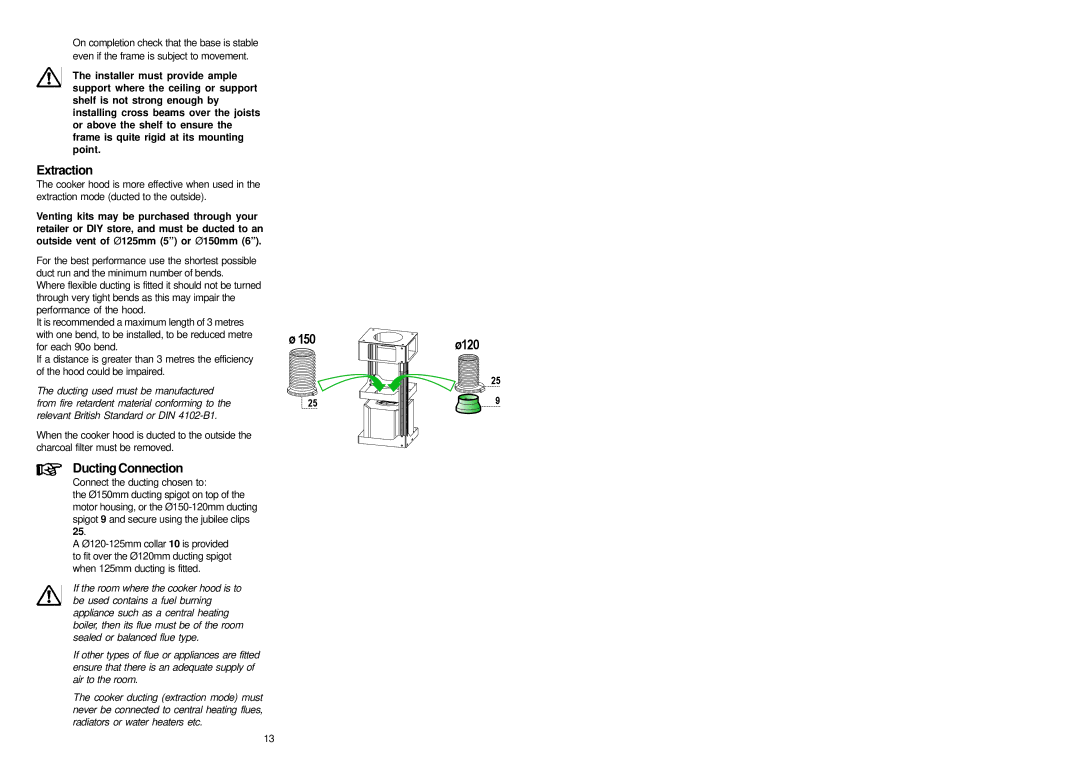
On completion check that the base is stable even if the frame is subject to movement.
The installer must provide ample support where the ceiling or support shelf is not strong enough by installing cross beams over the joists or above the shelf to ensure the frame is quite rigid at its mounting point.
Extraction
The cooker hood is more effective when used in the extraction mode (ducted to the outside).
Venting kits may be purchased through your retailer or DIY store, and must be ducted to an outside vent of Ø125mm (5”) or Ø150mm (6”).
For the best performance use the shortest possible duct run and the minimum number of bends.
Where flexible ducting is fitted it should not be turned through very tight bends as this may impair the performance of the hood.
It is recommended a maximum length of 3 metres with one bend, to be installed, to be reduced metre for each 90o bend.
If a distance is greater than 3 metres the efficiency of the hood could be impaired.
The ducting used must be manufactured from fire retardent material conforming to the relevant British Standard or DIN
When the cooker hood is ducted to the outside the charcoal filter must be removed.
Ducting Connection
Connect the ducting chosen to:
the Ø150mm ducting spigot on top of the motor housing, or the
A
If the room where the cooker hood is to be used contains a fuel burning appliance such as a central heating boiler, then its flue must be of the room sealed or balanced flue type.
If other types of flue or appliances are fitted ensure that there is an adequate supply of air to the room.
The cooker ducting (extraction mode) must never be connected to central heating flues, radiators or water heaters etc.
ø150
25
ø120
25
9
13
